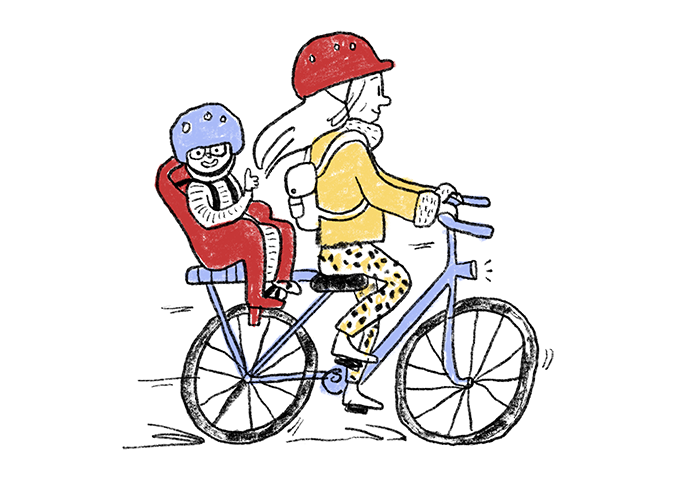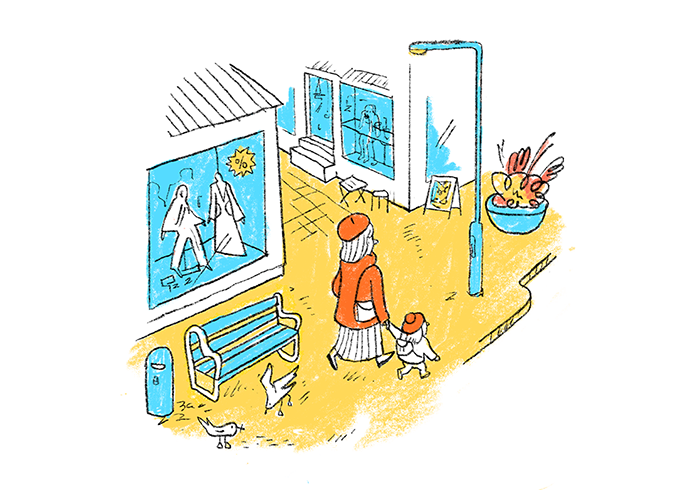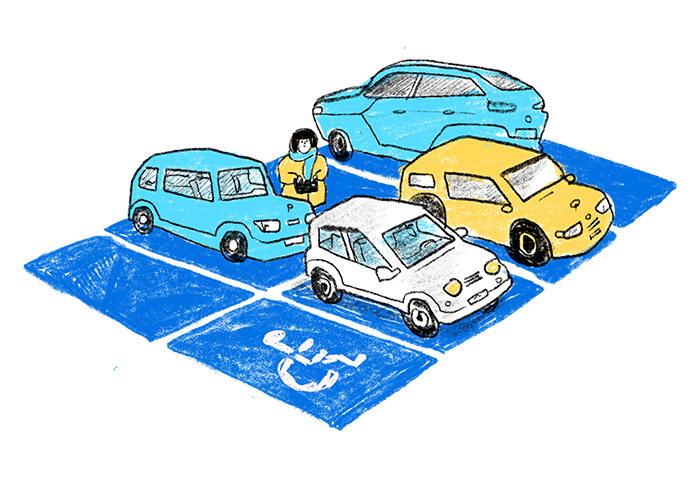Eco-friendly transportation

There is a strong focus on improving conditions for eco-friendly transportation in the neighborhood plan and reducing disturbances from vehicular traffic. Increased use of eco-friendly modes of transport aligns with the goal of developing sustainable neighborhoods with more shopping and services in mixed and dense areas.
Safe connections
A major goal of the neighborhood plan is to improve conditions for active modes of transportation, meaning for pedestrians, bikers, and public bus users. To encourage more people to walk and bike, it's necessary to define safe and comfortable routes while reducing disturbances from high-traffic streets as much as possible. Therefore, the neighborhood plan identifies important connections between neighborhoods for pedestrians and bikers that should be safe and of good quality.
Walking and biking paths
The neighborhood plan draft displays the locations of walking and biking paths. The plan also defines the most important walking and biking path connections within the neighborhood and where new path development is needed. Paths are generally shared by pedestrians and bikers, but in certain areas, it might be necessary to separate these transportation modes to ensure safety, especially on routes designated as primary biking paths in the city.
To promote the use of environmentally friendly transportation, the neighborhood plan focuses on ensuring good facilities for bike storage at school buildings. In Reykjavík, there is a parking policy for cars and bikes specifying the minimum number of bike parking spaces required at school buildings and commercial properties.
Public transportation
Even though the detailed layout of Strætó's network is not a task for neighborhood planning, the most important stops and routes of public transport in each neighborhood are mapped and marked in the plans. An integrated network of Strætó and CityLine will play a significant role in the city's planning and development in the coming years, serving as a key element in reducing the proportion of trips made by private car. Additionally, the neighborhood plan places a strong emphasis on ensuring that all, regardless of mobility, can easily access public transport stops.
City streets
Each neighborhood has defined city streets. City streets are main streets within each neighborhood, often with commercial and service cores, and they might provide access to schools and other important neighborhood institutions. They can also serve as important connections between different parts of the neighborhood.
The neighborhood plan puts special emphasis on beautifying the environment of city streets and on planning for all modes of transportation, with pedestrians given priority.

Parking spaces
By restraining the increase in parking spaces and the expansion of the road network, we can decrease the incentive to choose cars for most trips, making walking and biking more appealing and practical.
The permissions for lot holders' parking will transition into the neighborhood plan. However, the plan emphasizes the need to prevent an increase in new parking spaces and to promote the sharing of existing ones. In areas where extensive development is permitted for new dwellings or commercial spaces, such as on the land of multi-family residences or neighborhood centers, the number of parking spaces should adhere to the current car and bike parking rules in force in Reykjavík
